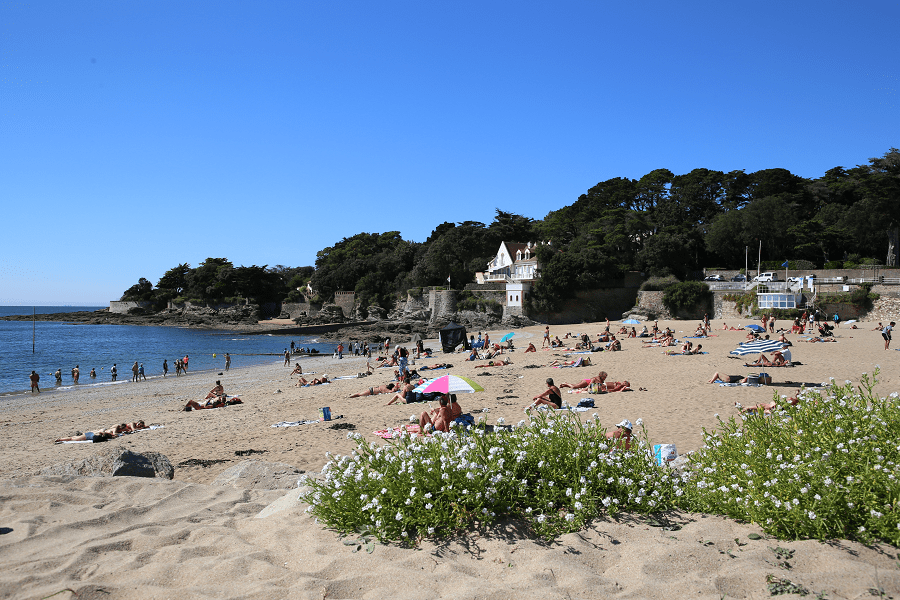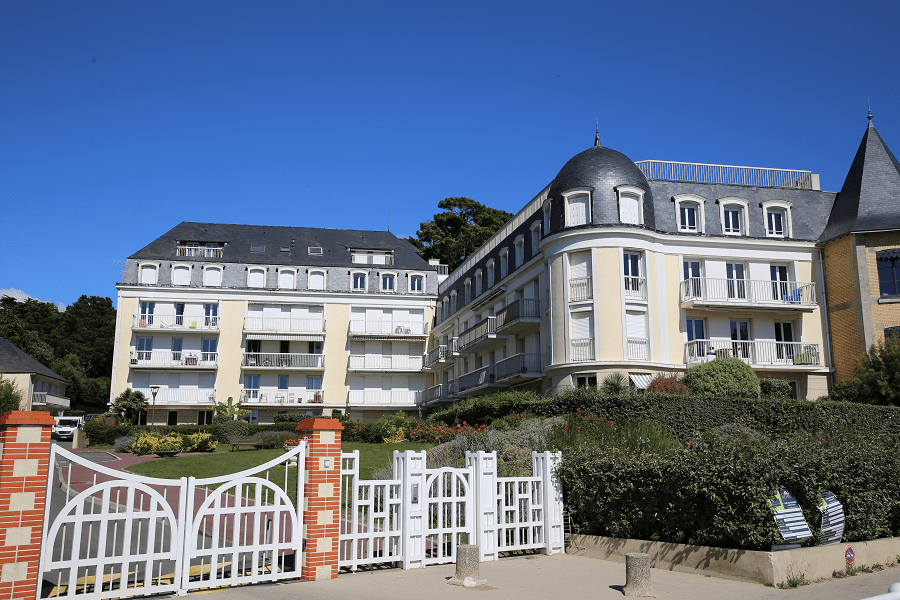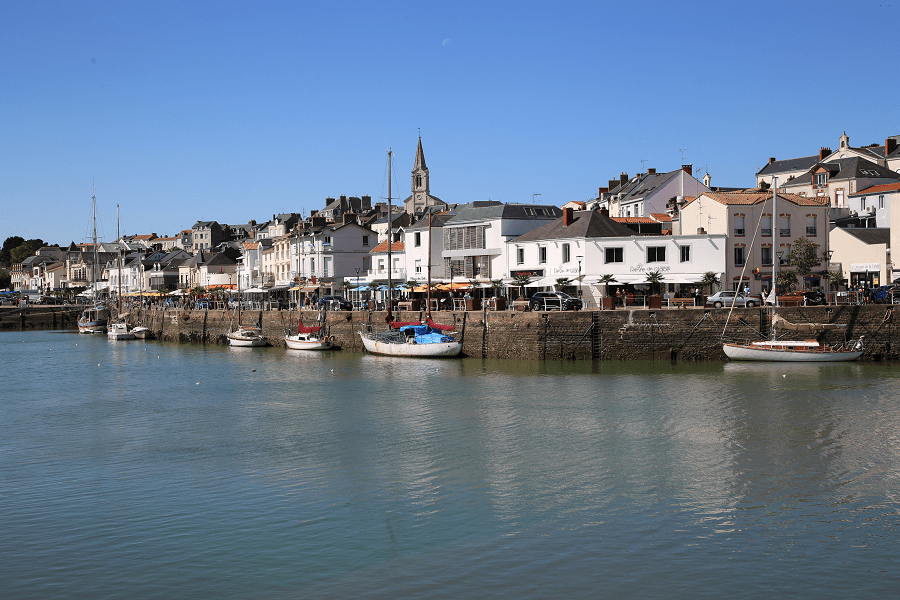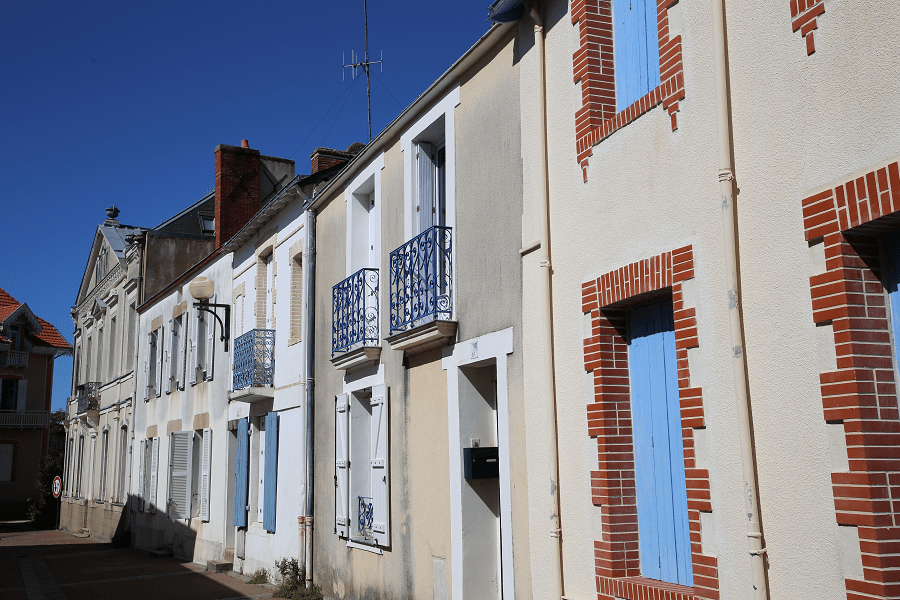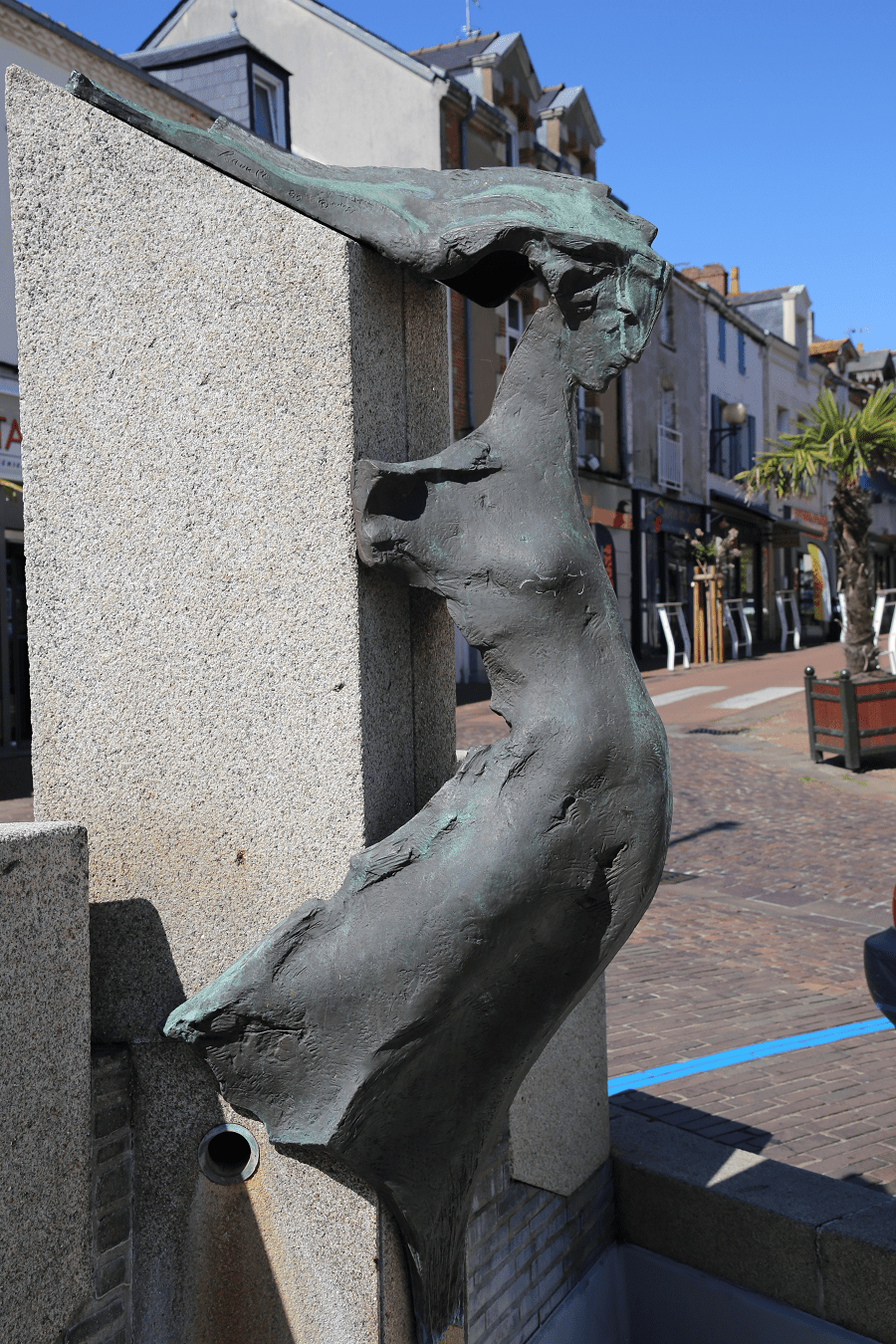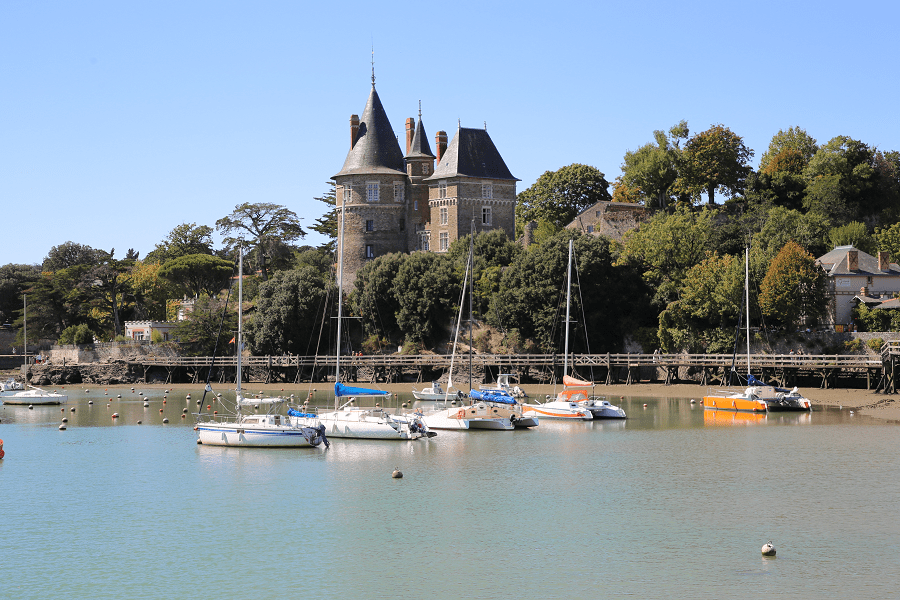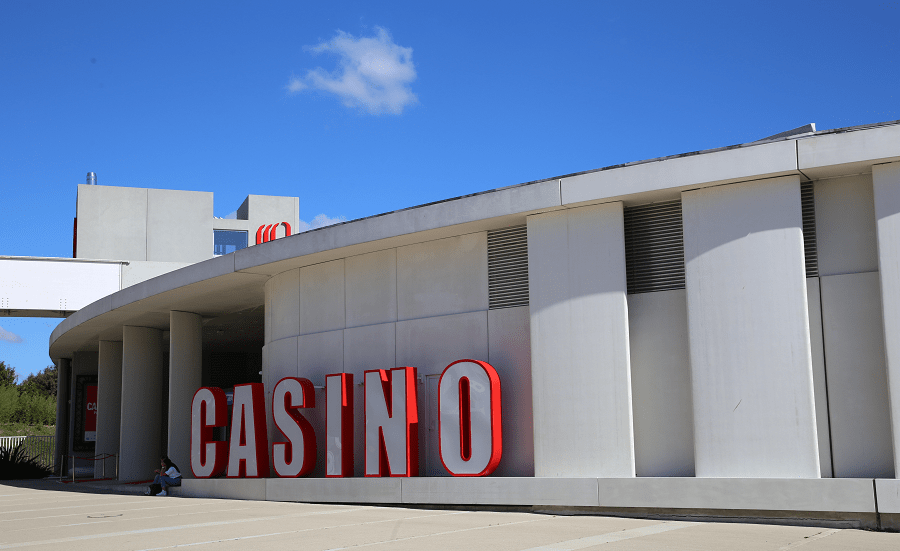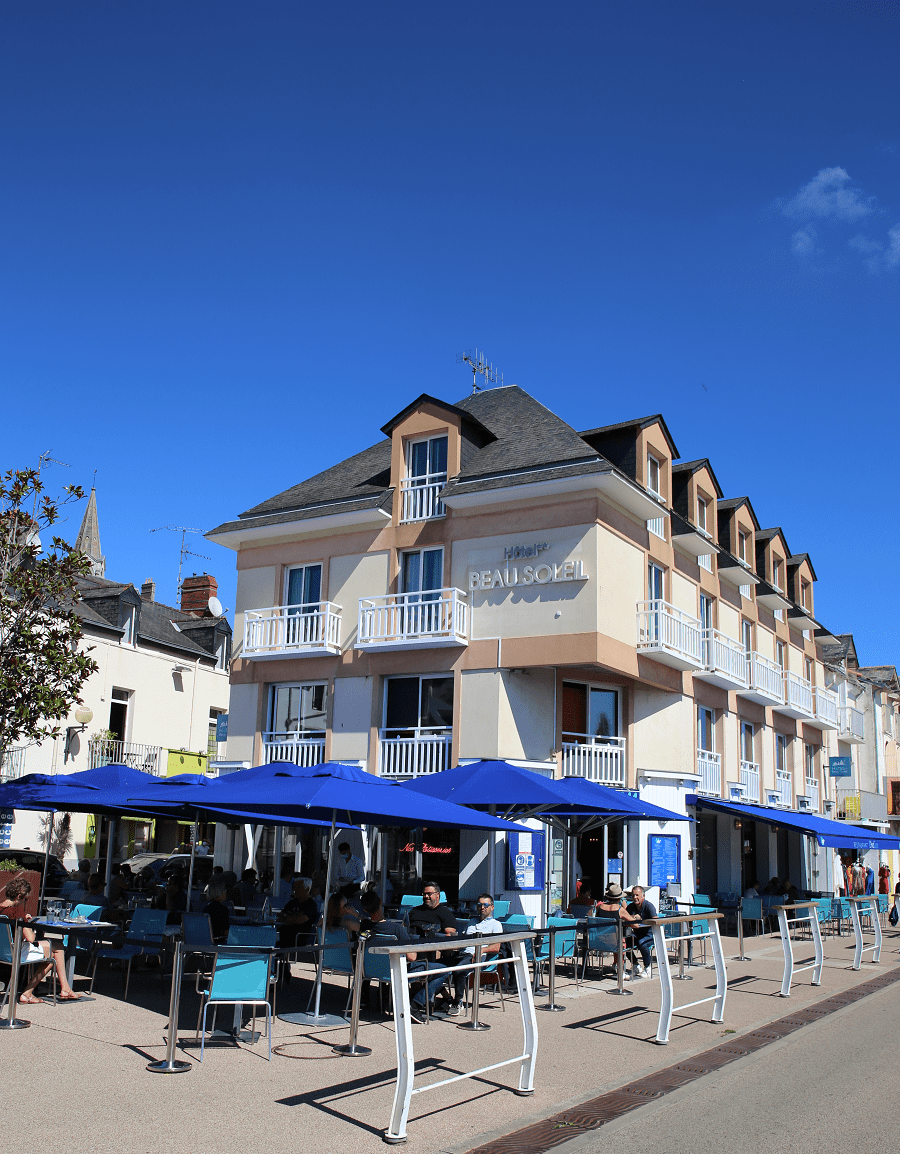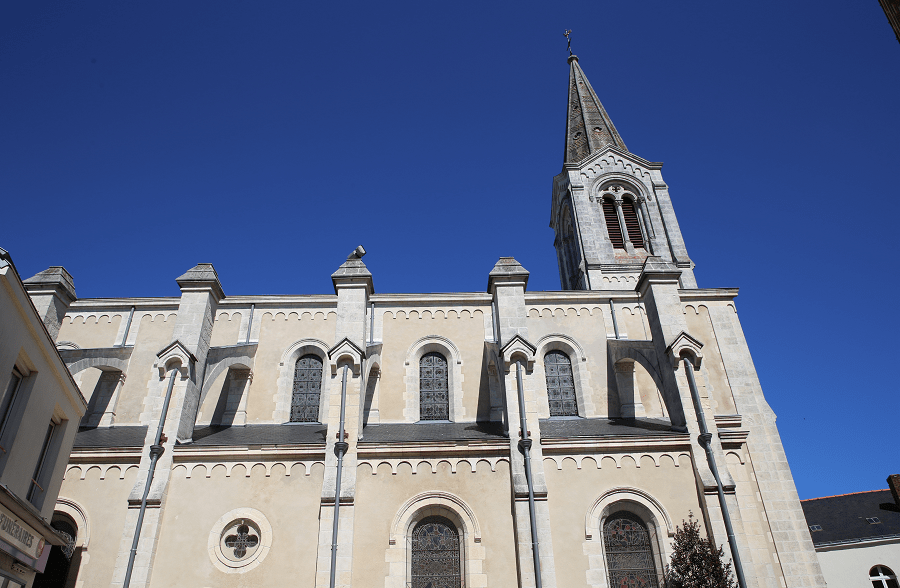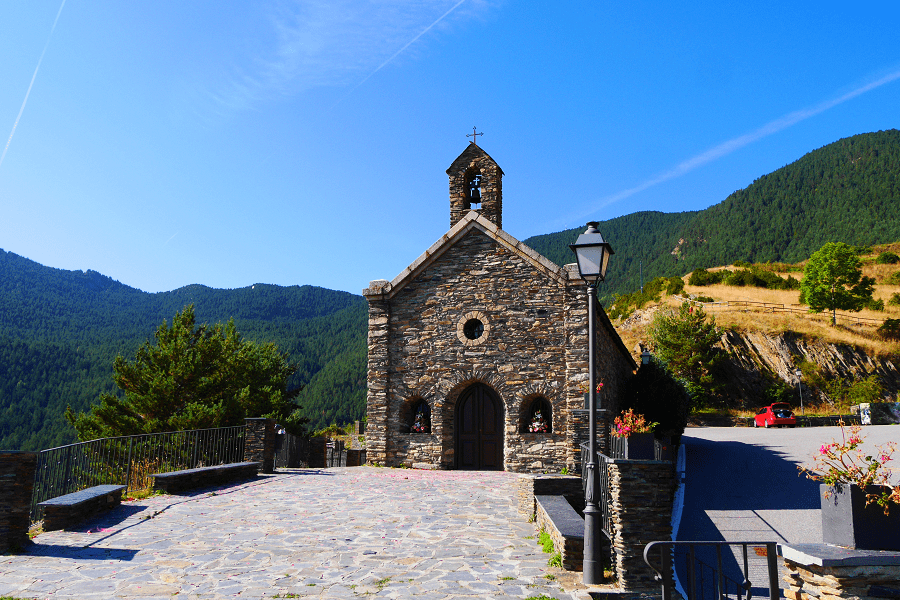Pornic (Fr. Pornic) is a commune in western France, located in the Loire-Atlantique department, in the Pays de la Loire region. Pornic is located on the Côte de Jade, on the edge of Bourgneuf Bay, 45 km south-west of Nantes and 20 km south of Saint-Nazaire.
The town is part of the historic area of Nantes.
Its main resources today are tourism and seafood.
The fashion for hydrotherapy which developed from the 1830s enabled Pornic to combine the appeal of a seaside resort with SPA. The virtue of the waters of the ferruginous springs discovered twenty years earlier attracted wealthy Nantes residents. The city develops around the port and on the coast: hotels, casinos, SPA, villas with gardens. In 1836, the locality Gourmalon, on the left bank of the port, was attached to Pornic. There, a district of bourgeois villas was born.
In the nineteenth century (1875), the rise of Pornic as a seaside resort encouraged the arrival of the train and the inauguration of the station with Nantes – Sainte-Pazanne – Pornic line. This situation will also lead, in 1906, to the inauguration of the line from Pornic to Paimbœuf serving the resorts of the Côte de Jade, a service which will end in 1939.
Many famous people appreciated the charms of this ancient Breton city, like Gustave Flaubert, Auguste Renoir, or Julien Gracq.
Tourism and main attractions
Pornic castle was built from the thirteenth to the fifteenth century, modified in the nineteenth century. It is also known as the “Château de Barbe Bleue” (Bluebeard). The oldest part is the north tower, which is topped with machicolations. The buildings in the center of the fortress were modified in the fifteenth century, when the south tower was built. The castle belongs successively to Gilles de Rais, Jean V de Bretagne, and to the Coétivy, Gondy, Villeroy and Brie-Serrant families. It was bought by the local authorities in 1824.
The Château des Brefs is a fortified castle built in the twelfth century in the former town of Clion-sur-Mer, first in wood, it served as a quarantine house for the port of Prigny. Rebuilt in stone the following century, it kept its medieval appearance until the seventeenth century, when this property of the Princes of Condé was razed under the reign of Louis XIII. On the vaulted cellars was rebuilt a Louis XIII style pleasure castle.
In the eighteenth century the castle was modified and enlarged. During the Wars of the Vendée, it was partly destroyed, and threatened to fall into ruin. In the nineteenth century, a family of local notables bought it (the Bocandé; Stanislas Louis Xavier Bocandé was mayor of Pornic in the mid-nineteenth century). The castle was then restored in 1830 in the Clissonnais style, popular at that time in the region.
Albert Camus lived at the Château des Brefs between 1942 and 1947, when he wrote The Plague novel.
The Clion Church dates from the thirteenth or early fourteenth century and was remodeled in the seventeenth and nineteenth centuries. Its bell tower, a bell tower-porch, has a mechanical chime from 1857 which can sound a full octave.
Beaches
The Plage de l’Étang and the Plage de la Boutinardière are perhaps the most booming. The Plage de l’Étang is a short distance to the north from Pornic, though. There is parking. It is 150 meters long and divided into little coves, set against a backdrop of pine trees and oaks and has lovely golden sand. During July and August there are lifeguards from 11am to 1pm and from 2pm to 7pm.
The Plage de la Boutinardière is in the other direction, to the south of Pornic and is great for rock-pool fishing and has a number of stilted fishing cabins known as carrelets. It has some unusual rock formations and is around 500 meters long so it is not usually too crowded. Parking is about 300 meters away. But be aware there are no lifeguards on duty here.
But the beach with the best sand is reputed to be the Plage du Portmain, north of Pornic. This beach has lots of parking, is popular with locals and has lifeguards during July and August.
The Plage de la Noëveillard, which is next to the marina of the same name, is one of the biggest of Pornic’s beaches and perhaps the best equipped in terms of services, with a bar and a restaurant.
Restaurants
Lovers of great gastronomy will also find the products of the Fraiseraie (ice cream, jams, pasta…), or the famous Curé Nantais, a cheese produced directly in the town.
There is one Michelin list restaurant in Pornic: Auberge La Fontaine aux Bretons, Chemin des Noëlles, 28 – 58 EUR • Traditional Cuisine
Shopping
Main shopping area is in the Old City (rue Rue de l’Église).
Transport and how to get to?
Pornic railway station is the terminus of the Sainte-Pazanne – Pornic line. Nearest airport is in Nantes.
Shortest distances by car:
From La Baule-Escoublac: 37 min (43.4 km) via D213
From Saint-Nazaire: 33 min (27.9 km) via D213
From Nantes: 56 min (51.2 km) via D751
From Cognac (tolls): 3 h 16 min (294 km) via A83
From Angoulême (tolls): 3 h 36 min (321 km) via A83
From Arcachon (tolls): 4 h 41 min (458 km) via A10 and A83
From Royan: 3 h 21 min (320 km) via A83
From Biarritz (tolls): 5 h 45 min (591 km) via A63, A10 and A83
From Bayonne (tolls): 5 h 33 min (577 km) via A63, A10 and A83
From Dax (tolls): 5 h 21 min (539 km) via A10 and A83
From Saumur (tolls): 2 h 17 min (205 km) via A11
From Bordeaux (tolls): 4 h 3 min (392 km) via A10 and A83
From La Rochelle: 2 h 24 min (182 km) via A83
From Toulouse (tolls): 6 h 7 min (628 km) via A62 and A10
From Carcassonne (tolls): 6 h 50 min (721 km) via A62
From Monaco (tolls): 11 h 20 min (1,210 km) via A62
From Nice (tolls): 11 h 8 min (1,195 km) via A62
From Cannes (tolls): 10 h 46 min (1,161 km) via A62
From Saint-Tropez (tolls): 10 h 48 min (1,134 km) via A62
From Marseille (tolls): 9 h 39 min (1,031 km) via A62
From Avignon (tolls): 8 h 50 min (957 km) via A62
From Montpellier (tolls): 8 h 9 min (870 km) via A62
From Béziers (tolls): 7 h 35 min (808 km) via A62
From Perpignan (tolls): 7 h 47 min (834 km) via A62
From Narbonne (tolls): 7 h 18 min (778 km) via A62
From Andorra (tolls): 8 h 15 min (811 km) via A62
Main information
Area: 94 sq. km
Population: 15 018
Languages: French
Currency: euro
Visa: Schengen
Time: Central European UTC +1
GPS coordinates: 47°07′00″N 2°06′00″W
See here best sea and ocean resorts of France and Spain (223 objects)




